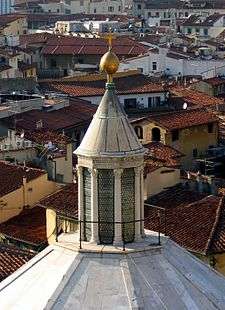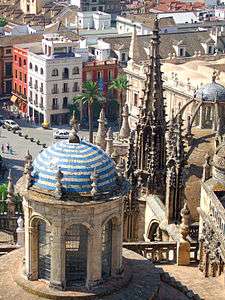Roof lantern


A roof lantern is a daylighting cupola architectural element. Architectural lanterns are atop a larger roof and provide natural light into the space or room below. In contemporary use it is an architectural skylight structure. The term 'roof top lantern' is used to describe the lighted decorative lanterns atop taxi cabs in Japan, designed to reflect the cultural heritage of Japanese paper lanterns.
History
The glazed lantern was developed during the Middle Ages. Roof lanterns of masonry and glass were used in Renaissance architecture, such as in principal cathedrals. In 16th century France and Italy they began usage in Orangeries, an early form of a conservatory structure with tall windows and a glazed roof section for wintering citrus trees and other plants in non-temperate climates.
Post-Renaissance roof lanterns were made of timber and glass and were often prone to leaking.
“Initially wood-framed in the 18th and 19th centuries, skylights became even more popular in metal construction with the advent of sheet-metal shops during the Victorian era. Virtually every urban row house of the late-19th and early-20th centuries relied upon a metal-framed skylight to illuminate its enclosed stairwell. More elaborate dwellings of the era showed a fondness for the Roof Lantern, in which the humble ceiling-window design of the skylight is elaborated into a miniature glass-paneled conservatory-style roof cupola or tower”[2]
Present day


Modern lanterns benefit from advances in glazing and sealing techniques, plus the development of high performance insulated glass and sealants, which reduce energy loss and provide water-tightness in the same manner as conventional skylights. Typically, roof lanterns are constructed using wood, UPVC or aluminium, or a combination of those materials.
They serve as an architectural feature, distinguished from commercial manufactured skylights by their custom design, providing unique views to the outdoors. Traditional architectural styles characterise most roof lanterns in the UK. In the U.S., where the term 'custom' skylight is often used, modern styles of roof lanterns are also common in the building vernacular.
See also
| Wikimedia Commons has media related to Lanterns (architecture). |
References
- ↑ Horn, Walter. "Romanesque Churches in Florence: A Study in Their Chronology and Stylistic Development". The Art Bulletin. Vol. 25, No. 2 (Jun., 1943), pp. 112-131.
- ↑ "Skylights & Roof Lanterns".